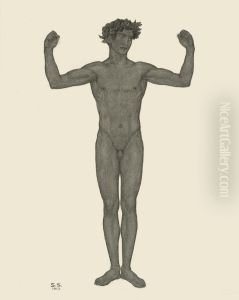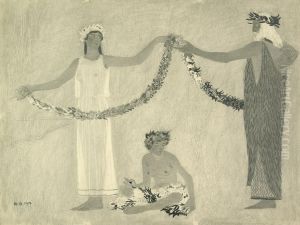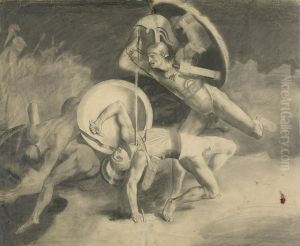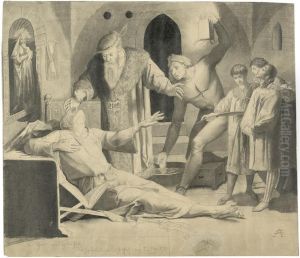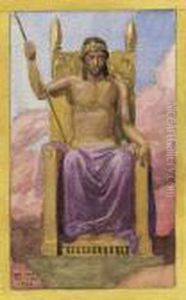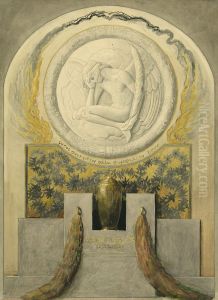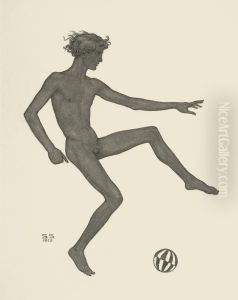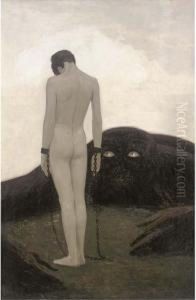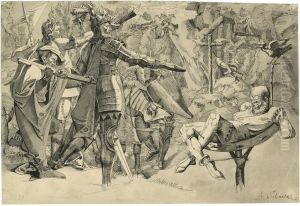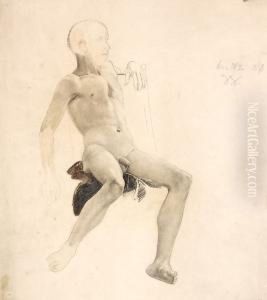Sasha Schneider Paintings
Sascha Schneider, born Rudolph Karl Alexander Schneider on September 21, 1870, in Saint Petersburg, Russia, was a German painter and sculptor known for his symbolic and often homoerotic works. Schneider grew up in a cosmopolitan environment due to his family's German origins and his birth in Russia. He later moved to Germany, where he became a significant figure in the art world of his time. Schneider studied at the Dresden Academy of Fine Arts, where he honed his skills and developed a distinctive style that blended classical themes with a modernist sensibility.
Schneider's art was deeply influenced by his personal beliefs and the cultural milieu of late 19th and early 20th century Germany. He was closely associated with the writer Karl May, creating iconic images for May's adventure novels that captured the imagination of the public. These works helped to cement his reputation, but Schneider's legacy extends beyond his commercial success. His exploration of themes such as masculinity, power, and vulnerability in works like 'The Warrior' and 'Hypnosis' challenged conventional norms and opened new avenues for artistic expression.
Despite his success, Schneider's life was not without challenges. His openly gay identity, at a time when homosexuality was socially unacceptable and legally persecuted, added complexity to his personal and professional life. He spent significant periods in Italy, which served as a source of inspiration and a refuge. In 1915, he was appointed as the director of the Grand Ducal Saxon School of Arts in Weimar, but his tenure was marred by controversy, partly due to his sexuality and avant-garde artistic ideas.
Sascha Schneider died on August 18, 1927, in Swinemünde (now Świnoujście, Poland) from a heart condition. His death marked the end of a career that had navigated the turbulent waters of early 20th century art and society. Today, Schneider's work is celebrated for its innovative approach and its contribution to the discourse on sexuality and identity in art. His legacy is preserved in museums and collections around the world, reflecting the enduring relevance of his vision.

